Disclosure: Meeple Mountain received a free copy of this product in exchange for an honest, unbiased review. This review is not intended to be an endorsement.
Wouldn’t it be great to find a game that takes many of the best parts of a game you already enjoy, makes it a bit shorter, keeps most of the fancy production elements AND still offers a rich decision space?
Lately, it seems like almost every game I loved from five years ago has tried to find that space. Heck, in the last year alone, I’ve seen or played versions of Terra Mystica, Terraforming Mars, Twilight Imperium, Spirit Island, Scythe, Orléans, and Everdell that aimed to be a more streamlined version of the base game.
This year, I’m intentionally driving hard into the past. Why look at so many new games, when there are THOUSANDS of great games from just a few years ago? I recently reviewed Age of Steam, a 21-year-old design. I like Age of Steam quite a bit, but its complexity plus its length at lower player counts are a minor turnoff.
I didn’t even know about Railways of the World (2005, Eagle-Gryphon Games) until the publisher sent a copy for review. Railways, designed by Martin Wallace (Brass: Lancashire) and Glenn Drover (Mosaic: A Story of Civilization), was updated with a 10th anniversary edition in 2015. This newer edition includes maps for the Eastern US as well as Mexico; in many ways, Railways of the World IS Age of Steam. The games share some of the same rules regarding tile placement, issuing shares—bonds, in the case of Railways—and the ways that goods are required to move between links to cities matching the color of the goods being moved.
Now that I have played both Railways of the World and Age of Steam, there’s a clear winner.
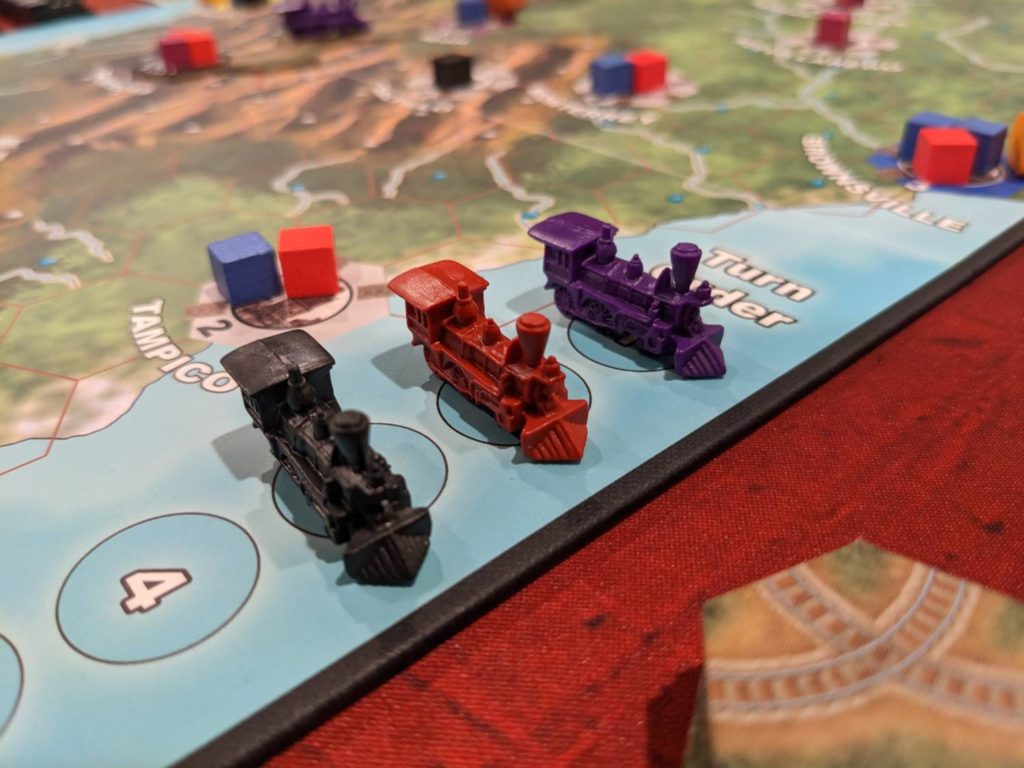
Cutthroat Lite
Like the manual for Age of Steam, the manual for Railways uses the word “cutthroat” (and sometimes, “cut throat”) more often than necessary to describe the play style required to win the game.
I would argue that Railways is “Cutthroat Lite.”
It’s the 19th century once again, and America—nay, the world—needs trains. Playing as industrialists operating individual, competing railroad corporations, the goal of Railways is to score the most points by delivering goods. These deliveries will slowly raise the income of that corporation, with bonuses tied to delivering goods over longer distances, establishing major routes, and Railroad Operations cards that provide one-time and/or ongoing advantages. Income (or more accurately, where your score marker resides on the income track) translates to the majority of a player’s final score, with a very small bonus available for players who can achieve the condition on their private Rail Baron goal card.
The end game is triggered via a condition known as “Empty City Markers” (ECM). Depending on the player count, a certain number of ECMs will be placed near the board. ECMs are placed each time a city is emptied of the goods cubes in that space.
Like Age of Steam, Railways puts turn order in the hands of the players. Each player must bid or pass to go first in a round, with the winner taking the first action and paying their bid to the bank. The remaining players follow in clockwise order around the table.
This means that even the turn order process is easier than it is in Age of Steam, where players pay a cost to select a certain spot in turn order. Not only does this speed up a game of Railways but it’s easier to teach and very quickly gets to the heart of the best asset of this game: accessibility.
Players will take three actions per Turn (and yes, a round in Railways is called a “Turn” and not a round; things were different in 2005). Like Age of Steam, you’ll be able to build up to four pieces of track, connecting from your existing track on the map. In Railways, this process is simpler than it is in Age of Steam—all players can always build four times, instead of just three, and the cost is simply the terrain type, not the track type plus the terrain type.
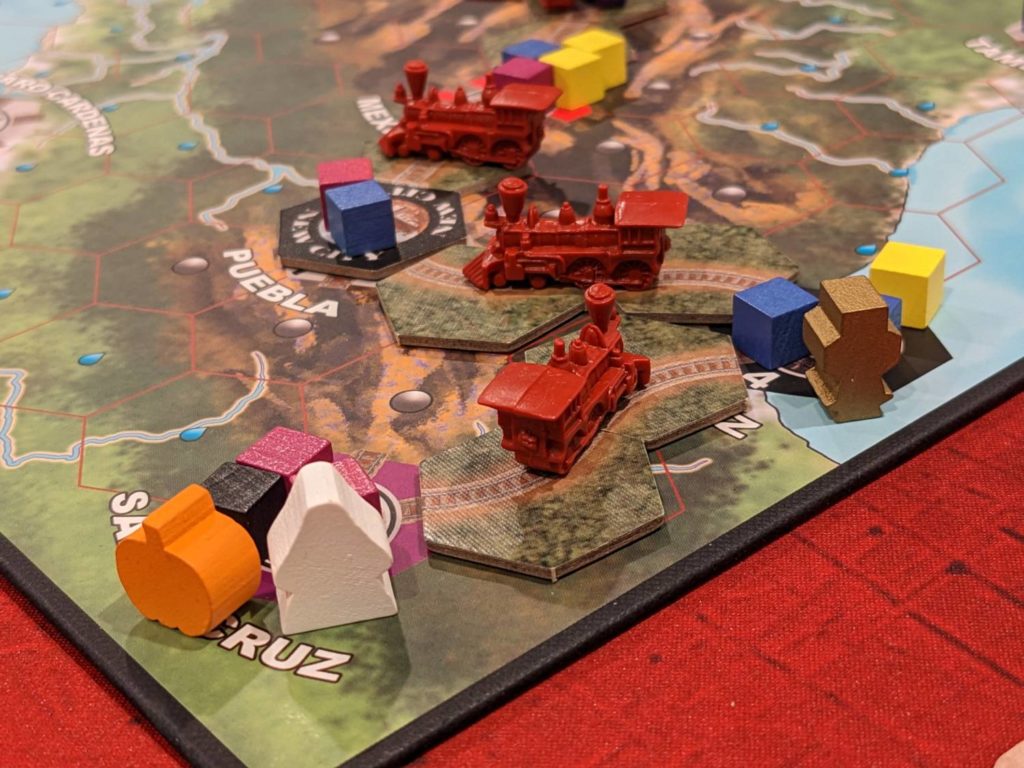
And building track is even more flexible in Railways because you have a choice—extend your existing network (by building from cities where you’ve already connected links on previous turns) or start a new network, as long as you start from a hex with a city space. In my first couple games of Railways, I just assumed the track rules mirrored the ones from Age of Steam. I was so wrong! Here you are never really cut off, giving players more flexibility to operate.
The Upgrade Locomotive action extends the distance that your train can move each turn to deliver goods. In both Railways and Age of Steam, your locomotive isn’t actually on the board; it is imagined, but called up physically in Railways with a stack of locomotive tiles that can be upgraded by paying the cost of the next-level engine. A 2-train can travel through up to two cities; this is how players track the distance that they can deliver goods from their connected links.
In Age of Steam, the action of turning one of the gray cities on the map—i.e., a city that has no color delivery goals—into a colored city is called “Urbanization.” In Age of Steam, only one player can do this per round because it is a special power, and it has no cost. In Railways, any player can take the Urbanization at any time by paying $10,000 to the bank. This level of flexibility leads to fun moments in Railways because anyone could do this at any time.
It is usually a pivotal, tension-inducing game changer when someone takes the Urbanization action because that makes a city a delivery location for all players, not just the one who takes the action. It can be devastating to take the Urbanization action, turning a city into, say, a yellow destination, then watching the next player in turn order deliver a good that you didn’t think they could deliver before you could score those points.
Delivering a goods cube in both Railways and Age of Steam is the same. Move a good along a connected network to a destination matching its color, and score one point for each link traversed. Sometimes, those will be your points; other times, the points will be split because you used both your own network of links as well as opposing players.
The final action of Railways is why I prefer Railways over Age of Steam: Railroad Operations cards. That’s because these cards are so juicy.
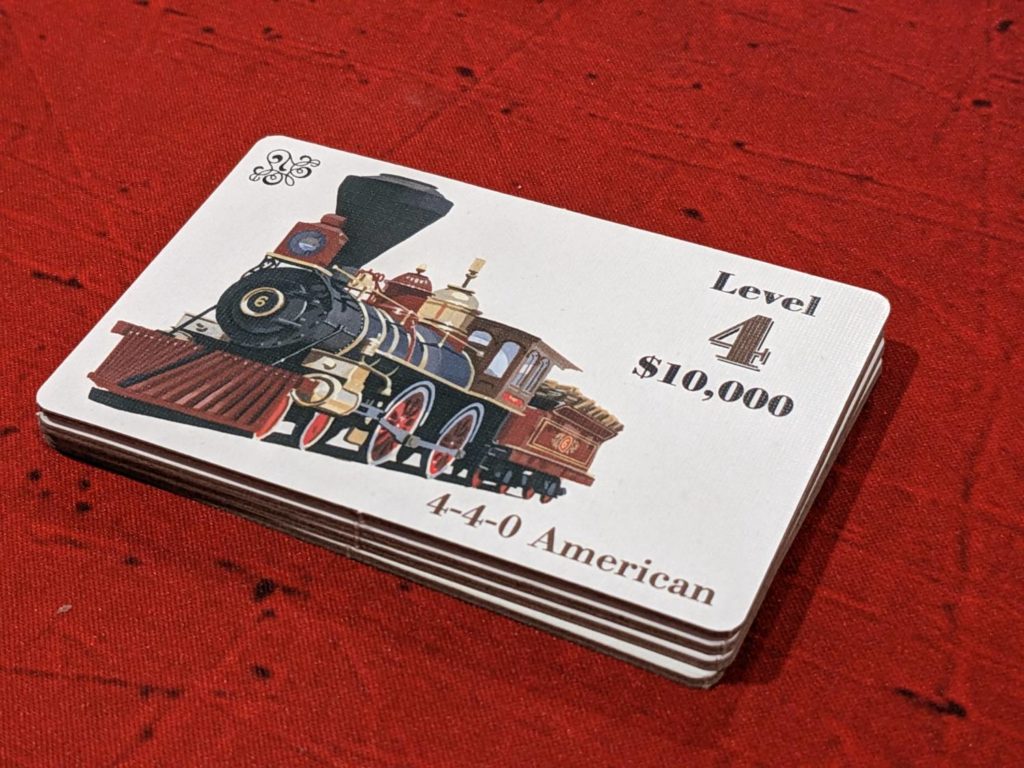
Railroad Operations for the Win!
Before play begins, a market of Railroad Operations cards are placed near the board. These cards represent a starting array of locations that will offer a small but important bonus to the first player to do something in your game: deliver to a specific city, deliver anything at all, deliver to a location three stops away, deliver four types of goods to four different cities.
Those starting cards offer public milestones for all players to achieve; they represent a race to clear a few initial hurdles while also pointing players towards an easy way to score quick points. In addition to those milestones, a number of additional cards are placed that grant bonuses for delivering to certain locations for the rest of the game.
So, some of these cards provide delivery bonuses, which are always boosts on the income track. Some of the cards grant a player bonuses for anyone who delivers goods to a specific city, like New York on the Eastern US map or San Antonio on the Mexico map. Some of the cards grant a one-time power, like a free Urbanization action or half-price costs to build track in mountain hexes.
And those cards are just out there, every turn, for the pickin’. But everyone can see the flop of new cards in-between rounds…providing another reason to try to bid for first-player status so that you can nab a card before another player.
I love the cards. I LOVE the cards. They make every game play out a little differently while providing options during the race; sometimes, snaking a card from a rival is more important than being the first to build a location to a low-stakes delivery location. One of the cards, Railroad Executive, is legitimately broken; a player who picks up that card as their main action gets to then take two additional, immediate actions.
Yeah.
But even that card is available to everyone when new cards are revealed to the card market in-between rounds. It’s broken, but it’s broken table-wide!!
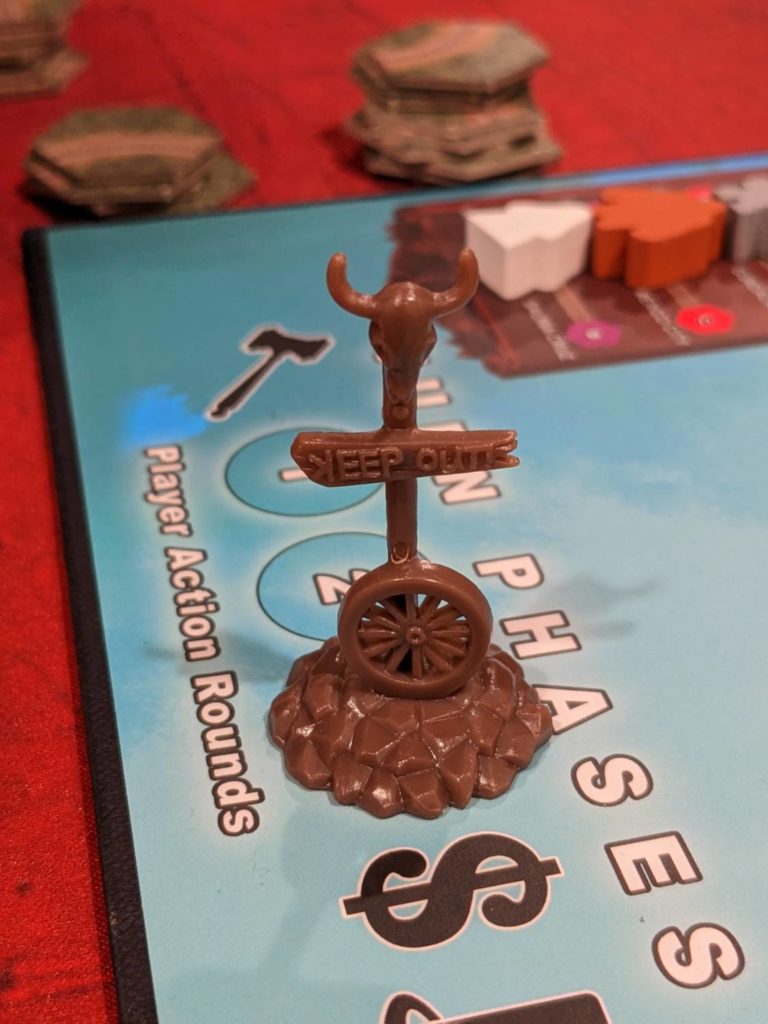
Railways to Heaven
I’m in the midst of a heavy train game love affair, so it’s not a surprise that Railways works for me. My main surprise is that it has completely replaced my desire to play Age of Steam because I think Railways is excellent and slightly more interesting than Age of Steam.
I love the route bonuses awarded to a player that can build connections across large parts of the map. I love that Railways is so easy to teach (although, to be fair, Age of Steam is almost as easy to teach.) The Mexico map at four players is a knife fight; I think I prefer that map, but that’s only because Railways at six players is a game that takes too long to play.
It’s a great production, one that has a game board that eats up almost my entire game table. (Thankfully, players don’t have their own player boards, or there’s no way I could get it all on the table.) The rulebook is not as elegant as the Age of Steam manual, but there’s less to teach in the Railways base game so I’m willing to let that one slide a bit. That Age of Steam rulebook is pretty though!
And maybe more than any other thing, I love that Railways is available on Board Game Arena so that I can always get my fix. Even better, BGA’s implementation has all of the maps, not just the two physical ones that I own, and it has all of the variable options for each map loaded in to offer many ways to enjoy the play space.
Some of my negatives about the experience? One of them isn’t really fair, since it is called out in the rulebook: playing with only two players on the Eastern US map is pretty boring. But the book says that the minimum ideal player count for that map is four players, and I would argue five players should be the minimum on the Eastern US play space.
Also, it should be easier to track how many cubes of each color are still in the goods bag when drawing to refill a city after the Urbanization action. That is important; if you know there’s a heavy yellow cube majority in the bag but no yellow cities connected in your current network, that might dissuade you from taking that action. (On BGA, these stats are provided at the bottom of the map screen.)
The final complaint is a strange one: I hate that the income maxes out at $25 before trending downwards after scoring a certain number of points. It’s almost like the designers carved out a sweet spot of having about 50 points, but then wanted to build in a catch-up mechanism to begin hammering those players’ ability to make a lot of money. In real life, I am finding that the richest corporations seem to continuously get richer, so let me live out that dream Wallace & Drover!!
All of those are minor quibbles. Railways is great, and I’ll play it any time!


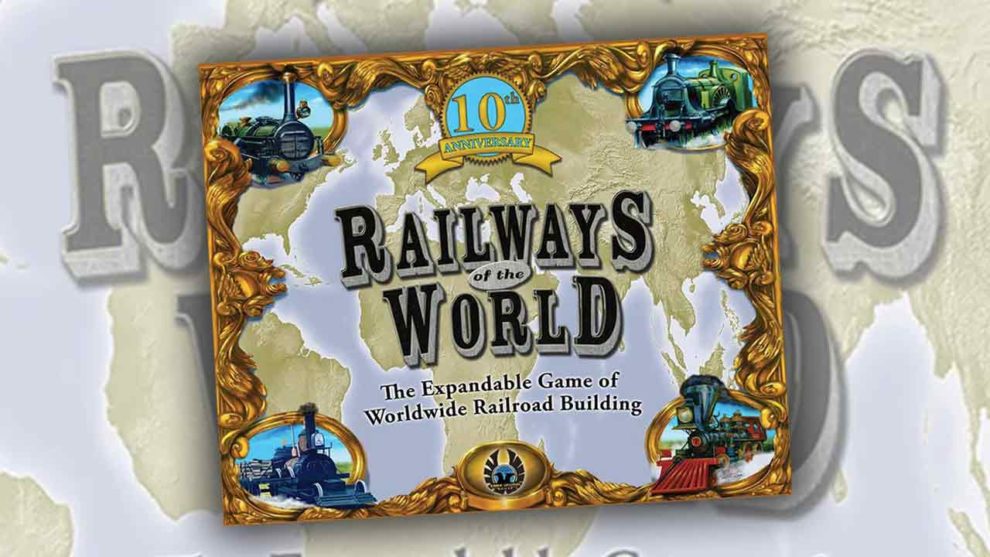









Add Comment